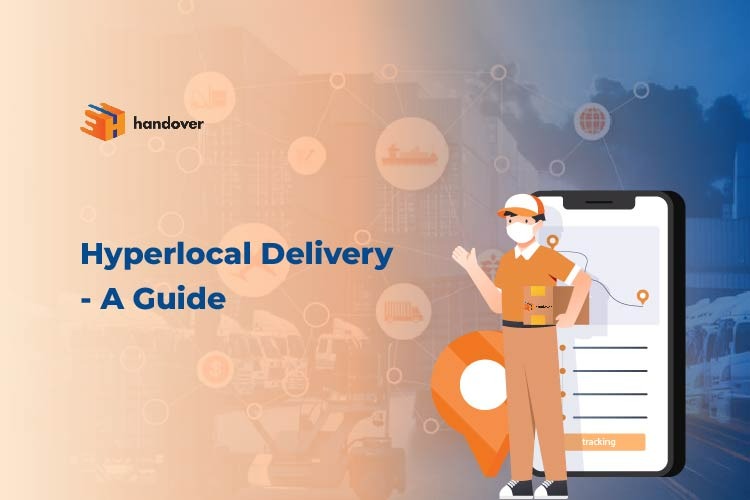Handover news
Blog
Hyperlocal Delivery – Helping Retailers with Faster Deliveries

Since its inception, the hyperlocal delivery model—also known as the on-demand near-me delivery model—has generated a lot of buzz. The hype is pretty clear because the hyperlocal delivery model gives sellers and buyers both convenience and efficiency at the same time. The hyperlocal marketplace model is gaining popularity because products can be delivered to customers in a shorter period. Many businesses are collaborating with hyperlocal delivery service providers to impress their customers.
What is Hyperlocal Delivery?
Hyperlocal delivery serves the requirements on a local level. It is the newest buzzword in the logistics industry. The rise of hyperlocal delivery platforms has benefited retailers immensely by raising their sales. It has the potential to make many retailers notable brands in times to come.
The ability of hyperlocal delivery platforms to deliver goods and services at an incredibly fast rate will help retailers receive orders continuously from their customers. Hyperlocal delivery models ensure quick deliveries to customers ordering with shops, stores, restaurants, etc. With the help of hyperlocal platforms, it is now much more feasible and simple to get faster deliveries of groceries or food.
For offline merchants experiencing ups and downs in their business, this is the ideal time to go online. Going online and collaborating with delivery service providers such as handover will speed up their business.
How Does Hyperlocal Delivery Work?
The hyperlocal marketplace model is a great illustration of how new technology can be combined with traditional shopping methods to create a formula for a successful logistics business.
A hyperlocal delivery model will have retailers, delivery service providers & their delivery executives, and the end users. These deliveries can be made from a few metres to several kilometres from the retailers’ location. Hyperlocal delivery service providers get a commission from retailers for the deliveries they execute through their delivery executives.
It ensures that the product will be delivered promptly and from a reputable local store.
A hyperlocal delivery service provider works by picking stuff from retailers and delivering it to the customers. It can tie up with nearby restaurants, grocery stores and other businesses for delivery services. These business models usually work on mobile applications.
Although it is commendable that some marketplaces today provide product delivery within 24 hours, a hyperlocal delivery service can accomplish the same in a matter of hours. The speed of delivery is an obvious advantage. But when the stuff comes quickly from well-known retail stores, it generates more interest. Customers get increasingly confident when placing orders with retailers that offer such impressive delivery services.
What is the Future of Hyperlocal Delivery?
Hyperlocal delivery marketplaces and the mobile apps that accompany them are quickly gaining popularity. These marketplaces have been getting serious investments from investors around the world. But there are bootstrapped marketplaces like handover which have created quite a buzz on their own. So, there’s ample scope for growth in the hyperlocal delivery space. With people continuously demanding faster delivery services, hyperlocal delivery service providers will continue to create a buzz in the market. Of course, the competition will get intense with more players fighting against each other. This is where hyperlocal delivery service providers with better technologies and extensive delivery networks on a local level will succeed more than the others.
However, quality must not get compromised in exchange for a fast delivery service. Because what matters to customers eventually is the quality of the product being delivered to them. Nobody would want torn mobiles, clothes, decayed food, etc. So, maintaining quality and time efficiency will help sustain the hyperlocal delivery ecosystem in India.
More on Hyperlocal Delivery
Firstly, hyperlocal delivery service providers must hire an efficient team of delivery executives who could navigate properly and deliver to the end users. The term hyperlocal delivery means the ordered products should be obtained locally from offline stores and delivered to their customers quickly.
Businesses can choose from a range of hyperlocal delivery service providers based on their needs. They must check the pricing and logistics capabilities of the particular service provider before signing a deal.
Conclusion
The hyperlocal delivery system can use bikes and other forms of transportation to deliver groceries, food, and so on. As retailers, check your logistics requirements and see the service provider that helps you fulfil the same. You can consider contacting handover, which helps retailers deliver successfully to their customers using its hyperlocal delivery service model. You can contact handover on its official website by mentioning your name, mobile number and email ID. Contact Now!
